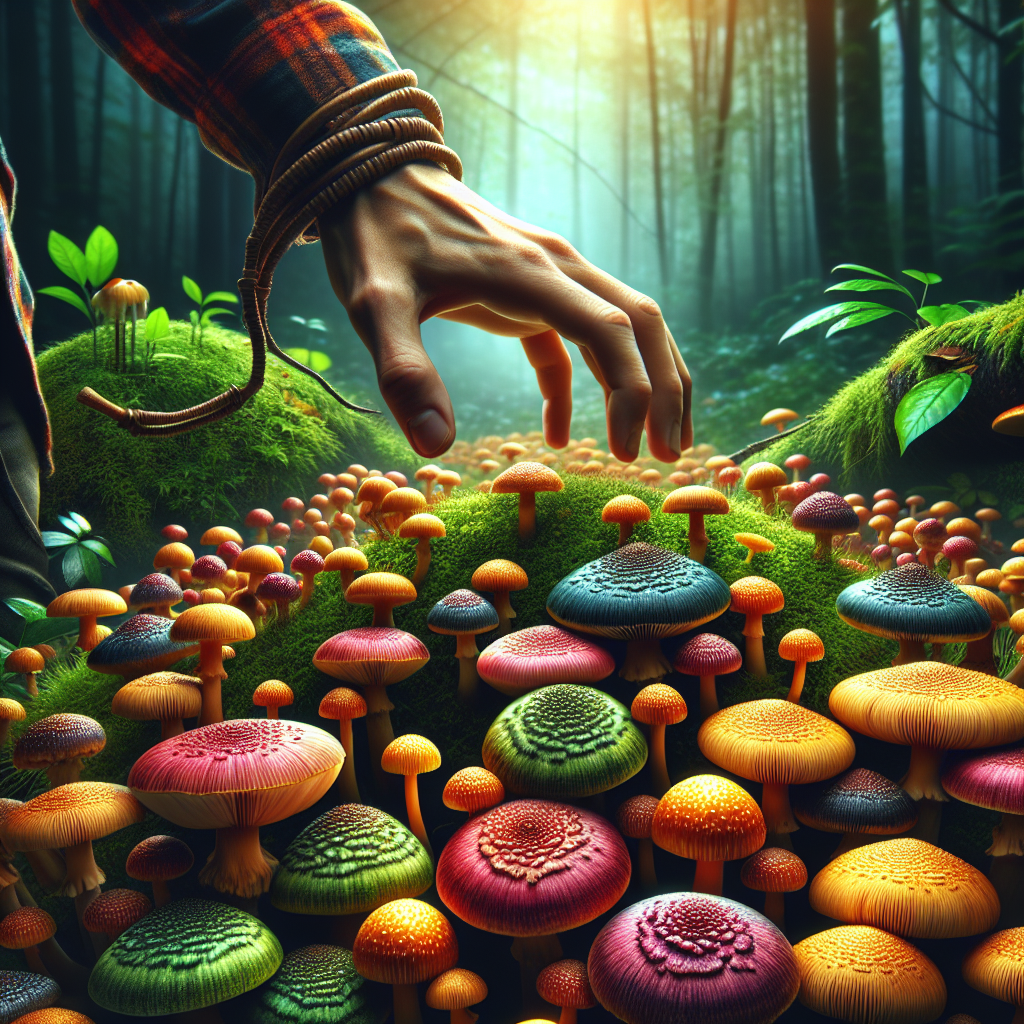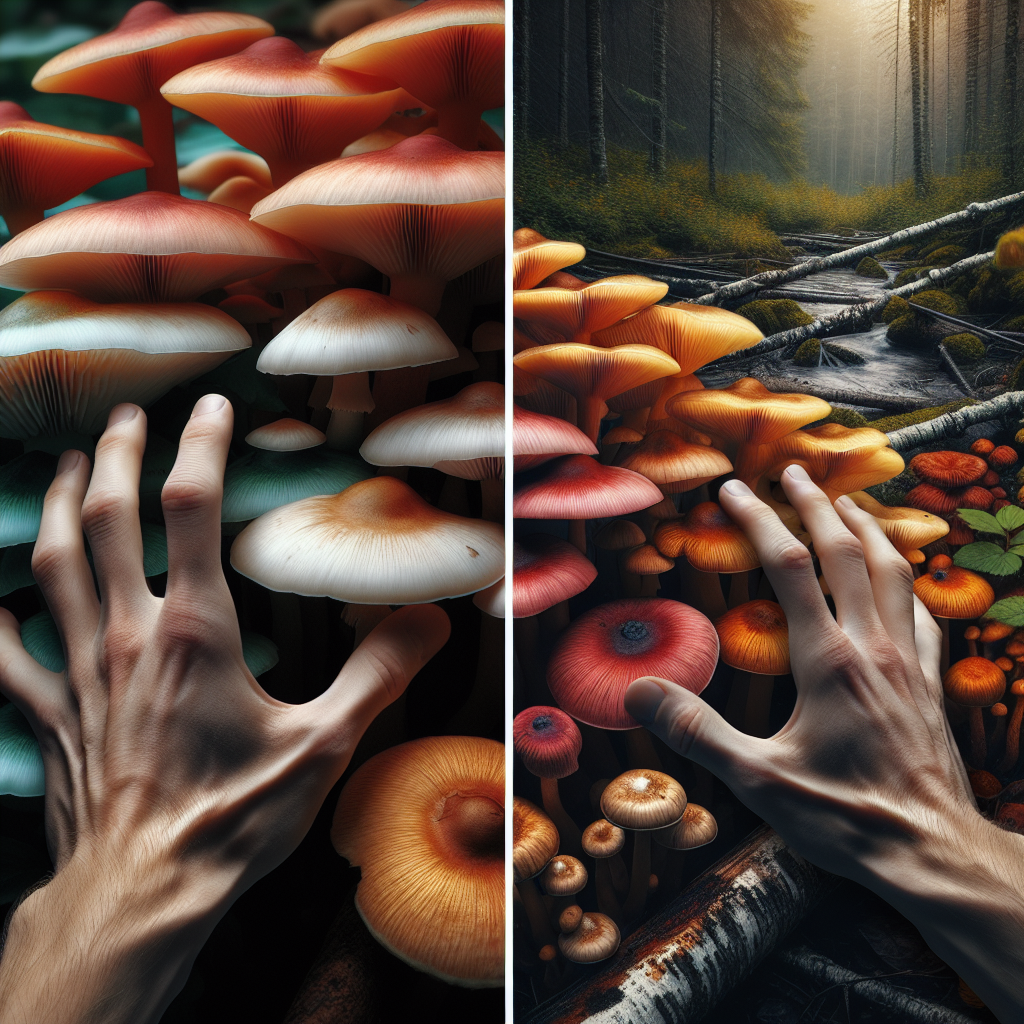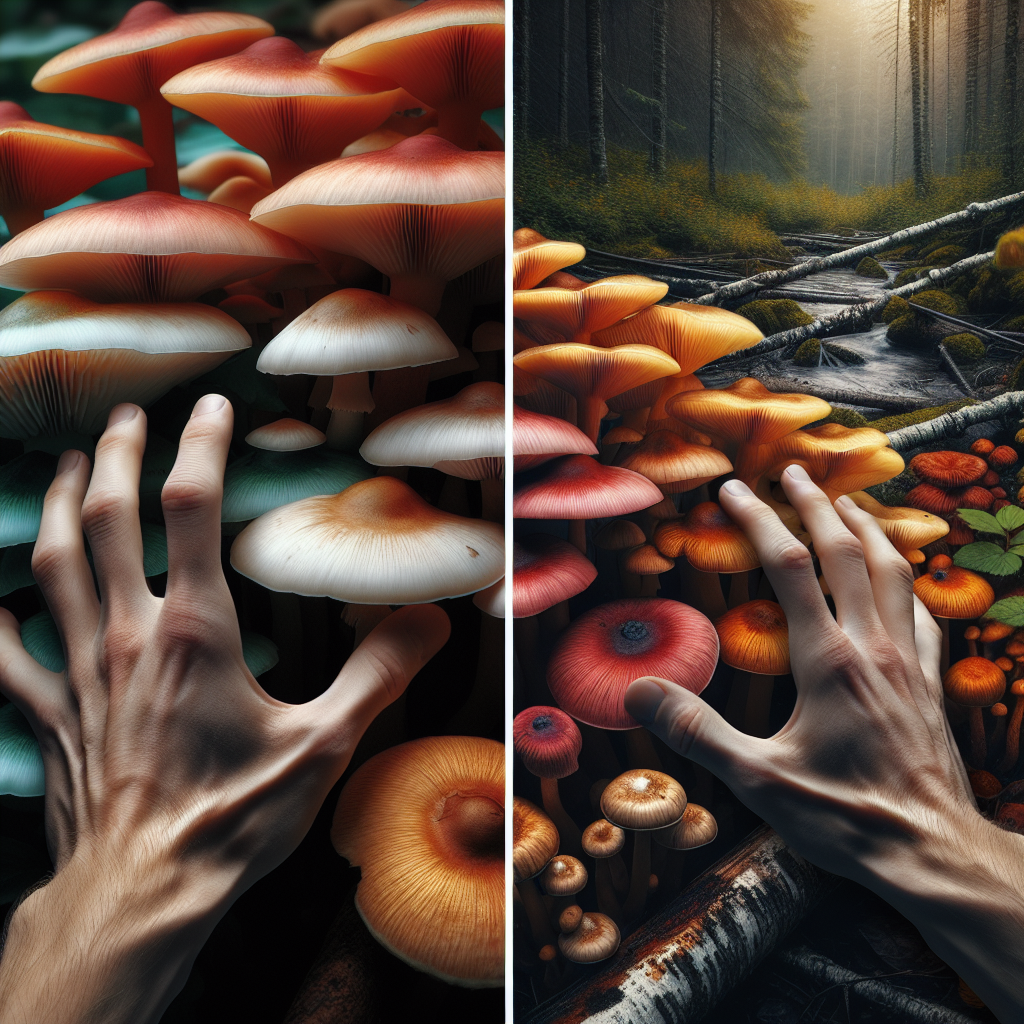Do you enjoy exploring the outdoors and gathering mushrooms, but worry about accidentally picking poisonous ones? If so, you’re not alone. Many mushroom foragers are concerned about distinguishing between edible and toxic varieties. In this article, we will provide you with some simple and practical tips to help you avoid the dangers of mistakenly picking and consuming poisonous mushrooms. So, put on your hiking boots, grab your basket, and let’s explore the fascinating world of mushroom hunting while keeping ourselves safe!

Understanding Mushroom Poisoning
When it comes to mushroom foraging, understanding the types of poisonous mushrooms is crucial for your safety. There are various species of mushrooms that can be toxic and cause serious harm if consumed. These poisonous mushrooms may contain toxins that can cause symptoms ranging from mild gastrointestinal discomfort to organ failure or even death. It is essential to familiarize yourself with the different types of poisonous mushrooms to avoid any potential risks and consequences.
Types of Poisonous Mushrooms
There are several types of poisonous mushrooms that you should be aware of. Some common examples include Amanita phalloides (Death Cap), Amanita muscaria (Fly Agaric), and Cortinarius orellanus (Fool’s Webcap). These mushrooms can be found in different regions and have distinct characteristics that set them apart from edible mushrooms. Acquainting yourself with these toxic mushrooms and their specific features can help you in identifying them correctly and avoiding any potential dangers.
Symptoms of Mushroom Poisoning
Recognizing the symptoms of mushroom poisoning is crucial for prompt action and seeking medical help if necessary. Symptoms can vary depending on the type of mushroom ingested and the amount consumed. Common symptoms include nausea, vomiting, abdominal pain, diarrhea, sweating, and dizziness. In more severe cases, symptoms may progress to liver or kidney failure, hallucinations, seizures, and even coma. Understanding the symptoms can help you identify any potential poisoning and take immediate action to ensure your well-being.
Risks and Consequences
The risks and consequences of mushroom poisoning can be severe. Consuming toxic mushrooms can lead to organ failure, potentially causing long-term damage or even death. It is essential to understand the serious nature of mushroom poisoning and take precautions to avoid any exposure to poisonous species. By educating yourself and following the guidelines outlined in this article, you can significantly reduce the risk and consequences associated with mushroom poisoning.
Identifying Safe Mushrooms
To ensure you are picking safe mushrooms, it is important to develop the necessary identification skills. There are several ways you can enhance your knowledge and become confident in identifying safe mushrooms.
Study Mushroom Field Guides
Mushroom field guides are valuable resources for mushroom identification. These guides provide detailed information, including photographs, descriptions, and habitat preferences for various species of mushrooms. By studying these field guides, you can familiarize yourself with the distinguishing characteristics of safe mushrooms and avoid any confusion with toxic ones. Investing in a reliable field guide specific to your region can be an invaluable tool for your mushroom hunting adventures.
Join Mushroom Identification Groups
Joining online mushroom identification groups can be an excellent way to learn from experienced enthusiasts and gain valuable insights. These groups often encourage members to share photographs and descriptions of mushrooms they encounter, seeking identification assistance from the community. By actively participating in these groups, you can develop your identification skills, learn from others’ experiences, and gain confidence in distinguishing between safe and poisonous mushrooms.
Attend Mushroom Foraging Workshops
Attending mushroom foraging workshops can provide hands-on learning opportunities and expert guidance. These workshops are often led by experienced mycologists or nature enthusiasts who are well-versed in mushroom identification. Their expertise can help you navigate the intricacies of mushroom hunting, understand safe mushroom characteristics, and learn how to differentiate them from toxic varieties. Workshops also provide a safe environment to ask questions and gain practical knowledge.
Consult with Experienced Mycologists
Seeking advice from experienced mycologists can be extremely helpful in your quest to identify safe mushrooms. Mycologists are experts in the field of fungi and can provide valuable insights and guidance. They can assist you in recognizing specific features, distinguishing edible species from toxic ones, and answering any questions or concerns you may have. Consulting with experienced mycologists can greatly enhance your knowledge and confidence in identifying mushrooms accurately.
Knowing Your Region
Understanding the mushroom species that are native to your region is essential for safe foraging. Each geographical area has its own unique mushroom diversity, and being familiar with the local species can help you make informed decisions while hunting for mushrooms.

Research Local Mushroom Species
Conducting in-depth research on the mushroom species found in your region is crucial before heading out on a foraging expedition. Identify the native edible mushrooms and become acquainted with their distinct features. Knowing which mushrooms are safe to consume in your area will significantly reduce the risk of accidentally picking poisonous varieties.
Be Aware of Regional Poisonous Mushrooms
In addition to researching edible mushrooms, it is equally important to be aware of the poisonous mushroom species prevalent in your region. Understand their characteristics and how they differ from safe varieties. By recognizing the dangerous mushrooms specific to your area, you can avoid any potential risks and ensure a safe foraging experience.
Understand Seasonal Variations
Mushroom growth is highly dependent on seasonal variations, which can affect the presence, abundance, and characteristics of different mushrooms. Some edible or toxic mushrooms may only appear during specific seasons or weather conditions. It is important to familiarize yourself with the seasonal variations in your region to accurately identify mushrooms and avoid any confusion between safe and poisonous species.
Understanding Mushroom Characteristics
Learning about the characteristics of poisonous and edible mushrooms is crucial for safe foraging. By studying the distinguishing features, you can minimize the chances of mistakenly consuming toxic mushrooms.
Learn About Poisonous Mushroom Features
Poisonous mushrooms often possess specific characteristics that can help differentiate them from safe varieties. Features such as bright colors, distinct smells, slimy caps, or unusual growth patterns can be indicators of toxicity. Familiarize yourself with these traits by studying field guides, consulting experts, and conducting thorough research. Recognizing these features will enable you to steer clear of potentially dangerous mushrooms.
Recognize Common Edible Mushrooms
In addition to identifying poisonous mushrooms, it is equally important to be able to recognize common edible mushrooms. Familiarize yourself with the characteristics of well-known edible varieties such as morels, chanterelles, or porcini. Understanding the distinct features of safe edible mushrooms will ensure that you can confidently identify and enjoy them during your foraging adventures.
Identify Key Differences
Identifying key differences between safe and poisonous mushrooms is crucial to avoid any potential risks. By understanding their distinguishing characteristics, you can make informed decisions while foraging. These differences may include color, shape, size, texture, presence of gills or pores, as well as habitat preferences. Paying attention to these details and observing them closely will help you make accurate identifications.
Using Proper Mushroom Hunting Equipment
Equipping yourself with the right tools is essential for a successful and safe mushroom foraging experience. The following equipment will aid in proper mushroom identification and collection.
Carry a Certified Mushroom Field Guide
A certified mushroom field guide is an indispensable tool for any mushroom hunter. Ensure that the field guide you choose is specific to your region and includes accurate information. The guide should provide clear illustrations or photographs, detailed descriptions, and prefera


No Responses